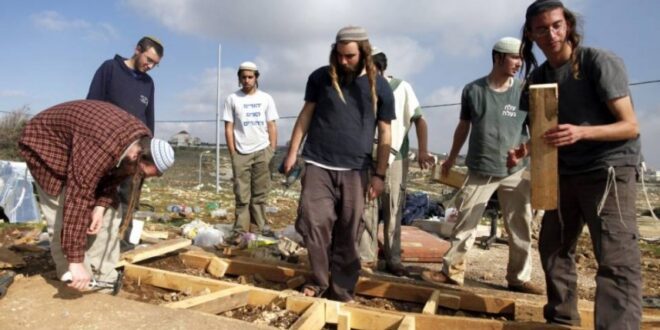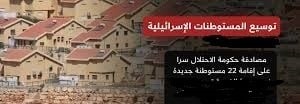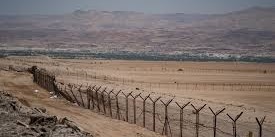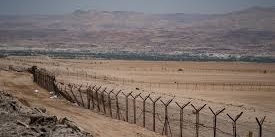By: Madeeha Al-A’raj
The National Bureau for defending land and resisting settlements ( nbprs ) stated in its latest weekly report , that Jewish Fund announced the resumption of supporting settlement and Judaization activities in the West Bank by planting trees in the Negev desert under the sign of afforestation, encouraged by Netanyahu, in order to confiscate more of the Palestinians’ lands, amid popular protests including the one in the Sheikh Jarrah, and many other areas in the West Bank, as is the case in the Negev, knowing that the Board of Directors of the Fund voted to transfer NIS 20 million this year in favor of settlement projects in various fields, including the enhancement of natural forests, and the structural plans for settlements
Moreover, the Fund approved a sum of NIS 1.6 million to control lands in the “Gush Etzion” settlement near Bethlehem. In Hebron also, a plan for afforestation will be launched at a cost of up to NIS 2 million in the Negev, besides the construction of houses for settlers, and the development of farms at a cost of up to NIS 12 million, and NIS 2 million for infrastructure activities.
In Jerusalem, the Planning Committee at the Occupied Jerusalem Municipality decided to change the name of the complex adjacent to the Hebrew University in Mount Scopus from student housing in favor of a settlement project for young families on long-term rent, as it gave the final approval of the plan. The so-called planning committee approved a plan to build small-scale settlement units for rent in place of student housing. The municipality revealed that the plan – the Jerusalem Arts Campus – will be on an area of about 1.6 dunums near the cultural centers and the arts campus, which is in the final stages of construction. The plan includes the construction of 220 small settlement units used for long-term rental in a 10-storey tower. The plan also includes a commercial area of 500m2, a kindergarten, and about 300m2 for cultural areas, as part of the campus activities that will be built on the ground floors.
In a dangerous escalation in the city of Jerusalem, the Jewish Associations are preparing to attack the Al-Aqsa Mosque in the coming month of Ramadan, which coincides with the @Hebrew April@ and is punctuated by 5 occasions and holidays for the Jews named; the pre-ordered Passover of Seven Days, the Day of Fasting Al-Bakr, and Yum Hashwa, to carry out their schemes in storming Al-Aqsa Mosque. The alleged sentence called for an intensification of incursions into Al-Aqsa Mosque during the month of Ramadan, and not to submit to the endowment’s position calling for stopping the proposals throughout the month, according to the commonplace and the status quo since the occupation of Jerusalem in 1967, and intensified with the beginning of the next Ramadan.
Besides, the occupation authorities are expanding the targeting of Palestinian land with the aim of promoting settlement construction until it extended its hand to areas classified according to agreements between the two sides as Areas A, especially in the governorates of Bethlehem and Hebron, according to a recent report issued by the Institute of Applied Sciences (ARIJ), according to a scheme that dates back to the year 1983, when it was frozen, at which point it was expanded and announcing the start of its implementation.
They announced the approval of the settlement plan n. 51/21, where the so-called “administration officer for environmental protection affairs in the Israeli Civil Administration” requested to declare an area of 7,048 dunums of Palestinian land belonging to the eastern governorates of Bethlehem and Hebron as a “nature reserve”, specifically the lands of the towns of Sa’ir and Al-Sheikh In Hebron Governorate, and the eastern wilderness of Bethlehem Governorate.
It appears that the occupation authorities, according to (ARIJ), are planning to merge the so-called eastern Gush Etzion settlement bloc – which includes the illegal Israeli settlements in Nicodim, Tekoa, Kafr Eldad, Ma’aleh Amos, Asfar Masad and Abi Nahal – with the “Gush Etzion West” settlement bloc, by allocating private spaces for it to expand in the future at the expense of the surrounding Palestinian territories.
The occupation authorities are also planning to build new Israeli bypass roads in the area that would create geographic and demographic coherence between the two settlement blocs, without paying attention to the negative consequences that this entails with regard to the surrounding Palestinian communities and their residents, such as the bypass road with the aim of linking the settlement bypass road n. 912/2 Etzion East in the Israeli settlements in the south, built on the lands of the Hebron Governorate.
List of Israeli Assaults over the Last Week Documented by the National Bureau:
Jerusalem:
- Demolishing a commercial facility in the town of Beit Hanina, and forced the Jerusalemite, Mah’d Abu Diab to demolish his own house, a resident of Ras al-Amud, under the pretext of building without a permit.
- Handing over the Jerusalemite, Ihab Al-Hussaini an order to demolish his house in the Jabal Al-Mukabber. Town.
- Attacking Jerusalemites in Sheikh Jarrah Neighborhood, amid protection from the occupation police, and support from members of the extreme right in the Israeli Knesset, where calls spread in groups for the Zionist extremist right calling for breaking the bones of the Palestinians in Sheikh Jarrah, and expelling them to the Gaza Strip.
Hebron:
- Uprooting 50 olive trees in the “Zahr Al-Mansra” area, east of Surif, on lands with an area of about 100 dunums, which is an agricultural area that farmers cultivate throughout the year.
- Demolishing an agricultural room in the “Wardan” area, east of Beit Umar, an agricultural well, a number of olive trees, and a warehouse in Wadi al-Sheikh on the pretext that it is close to the settlement street. The demolition of an agricultural room in the town of Halhul in the “Al-Hawawer” area.
- Attempting to spray their agricultural fields with incendiary chemical pesticides, a brigade and an agricultural room in the village of al-Fakhit in Masafer Yatta, and demolished a well and a house under construction in the Um al-Shaqhan area in Khallet al-Miya.
- Handing over a notice to stop construction on a house in the Bayrouq area, in Masafer Yatta, south of Hebron.
- Conducting a survey of a number of population centers in Masafer Yatta, concentrated in the areas of Ain Al-Bayda, Bir Abu Saban, UmmAl-Safa and other communities and villages.
Bethlehem:
- Attacking citizen of Kisan village while he was grazing his sheep, sprayed him with pepper gas, before the occupation forces came and arrested him on the pretext that he resisted the settlers.
- Preventing citizens of the Al-Shaer family from planting their land with olive saplings in the Rakhma area, expelling them and threatening them not to return again.
Tulkarm:
- Bulldozing lands in the Shufa village, southeast of Tulkarm, and dozens of olive trees were uprooted in favor of building a settlement road towards the settlement of “Avni Hefetz”, which is built on the lands of the villages of Shufa, Kafa and Kafr al-Labad.
Qalqilia:
- Damaging vehicle tires, wrote racist slogans in the Jinsafut village on vehicles, and drawn the “Star of David” on walls, and threatened citizens to death.
Jordan Valley:
- Dangers of demolishing a 150-square-meter house and a 300m tent in the village of Kardala in the northern Jordan Valley.
- Executing extensive training in the areas of Al-Burj, Um Al-Qaba Plain, Khirbet Uhaish, western Samra and Biar Saud areas, which led to the sabotage of large areas of rain-fed agricultural crops.
- Dangers of demolishing a water pool with a capacity of 500 cubic meters, another with a capacity of 1000 cubic meters, a residential “caravan” of 40m2, and a warehouse for storing agricultural materials of 120m2 in the village of Atouf, southeast of Tubas.
- Imposing fines of about NIS 21,000 on the residents of Khirbet al-Ras al-Ahmar in the northern Jordan Valley to retrieve their vehicles and equipment that were seized for 3 months.
 المكتب الوطني للدفاع عن الارض ومقاومة الاستيطان منظمة التحرير الفلسطينية
المكتب الوطني للدفاع عن الارض ومقاومة الاستيطان منظمة التحرير الفلسطينية




